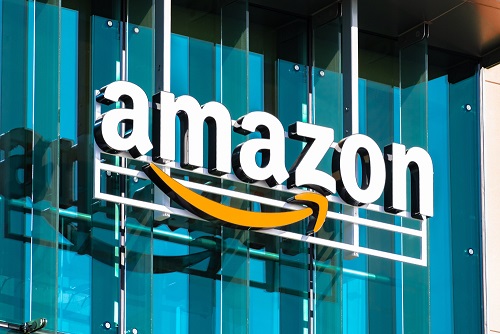Amazon Health and Fitness Obsession: What’s Behind?

Here is why Amazon, the online retail empire is opening healthcare clinics and offering to analyze your body fat ratio.
“Alexa, refill my Lipitor.” In the future, these may be the only four words you need to say to get a prescription drug delivered to your doorstep, as Amazon, the online retail empire that’s tightened its grip over commerce amidst COVID-19-related shifts in consumer behavior, breaks into an industry related to health and fitness – the pharmacy industry. Last month, the conglomerate launched Amazon Pharmacy, a prescription fulfillment and delivery system.
This is not Amazon’s only foray into the health and fitness sector. The company’s recent moves and announcements have shown a preoccupation with fitness and healthcare.
In September, Amazon released its own Halo fitness tracker ($65, plus subscription fees) and a corresponding app that — somewhat unsettlingly — asks users to upload images of themselves in form-fitting clothing to measure body fat and measures the tone of their voice to judge their social self-presentation. The following month came the Echo Buds ($130), wireless earphones that can give measurements of steps walked and calories burned. Amazon is backing Haven, a healthcare-focused joint venture with Berkshire Hathaway and JPMorgan Chase, and Amazon Alexa Fund has invested in companies focused on health and fitness. So why is the mega-conglomerate that delivers socks and spatulas to your house and produces The Marvelous Mrs. Maisel so interested in your health and fitness?
In a succinct email response to questions from Athletech News, Amazon spokesperson Molly Wade said, “There are a lot of reasons for entering any category” without elaborating.
These developments are clearly years in the making, but their unveilings coincide with a few trends, accelerated by the coronavirus. Demand for prescription delivery is expected to grow, as people with chronic illnesses have the most reason to stay home. Also, 21st-century consumers generally expect products at their doorstep (a model foisted by Amazon at every step of its 25-year growth).
“There is a strong argument that they are doing the pharmacy now when they can pull it off,” said Tom Forte, a senior research analyst at DA Davidson.
The company has been expanding its networks of warehouses and smiley arrow-branded delivery trucks for years. In 2018, it purchased PillPack, a prescription delivery service, for $753 million, obtaining much of the network for such a service. They may now have the railway paved to deliver medications quickly and effectively.
Digital health devices are also on a growth spurt, as a homebound population looks for workout always-available solutions. The Halo, seeming a competitor to Fitbit and Google Watch, is a comparative bargain, with its price set to increase from $64 to $100 after an entry wave of users (though for Amazon, arguably more valuable is the reoccurring monthly subscription cost for the programs paired with the health and fitness device). It is cheaper than all but the stripped-down bargain trackers sold by Fitbit and Apple. The Echo buds are also on the frugal end of a category of products that can extend to luxury models costing a few grand.
“They are making baby steps into the market,” said Ivan Feinseth, Chief Investment Officer of Tigress Financial Partners. “Garmin [smart watches] cost $85 to $2,500. This is clearly for the casual user who thinks they might want a fitness tracker.”
Forte said Amazon might be as meh about its commitment to the concept as its potential customers might be to the idea of health and fitness tracking. He points out that the company has a history of introducing its own versions of tech trends, seeing if they stick and then dropping the ones that didn’t.
“I remember the Fire Phone,” said Forte. “That was a $100 million write-off.”
Amazon’s smartphone, released in 2013, frustrated early users with its incompatibility with common apps and failed to keep up with competition.
Forte said Amazon has a history of making a play for some newly pioneered tech space, just to see how it plays out. It’s only their successes that we remember. Other trend-following products that fizzled include The Amazon Spark shopping platform, the Amazon Restaurants food delivery service and Amazon Storywriter screenwriting software. Amazon is big enough to take such risks without much damage to the company’s growth or reputation. In fact, it may be necessary to hitting on the success stories, to hit on a Kindle, Echo or Amazon Studios — none of which were the first ventures of their kind but seemed to stick.
“I’m not convinced [the Halo] is a permanent part of their strategy,” said Forte. It may just be another attempt to a trial-and-error routine.
Despite its omnipresence, Amazon has never been much of a tech innovator. It enters a market through a copycat product or acquisition of a company rather than introducing a category of products.
“Amazon was not the first cloud hosting company but now they are the biggest,” said Feinseth. “Amazon was not the first online retailer but now they are the biggest. They don’t go first.”
Another reason Amazon might be challenging Fitbit is it can’t buy Fitbit. Google announced plans to acquire the Coca-Cola of fitness trackers in November of 2019 and is proceeding through regulators to complete the purchase. Amazon’s past purchases of Zappos, Diapers.com and Whole Foods show that when the deep-pocketed company wants to intrude in on a niche market, their other tactic is to just buy a company that’s already well-situated within it.
As for the non-product-related investments by Amazon in health and fitness — which include several company-owned healthcare clinics for its employees — Forte said that Amazon may have smelled the political winds. Its continued growth in an age when local businesses are being shuttered by the impact of COVID-19 may be unpalatable for some socially conscious consumers. Add to that regular protests by employees over pay and working conditions.
“Joe Biden said he wants to be the most pro-union President ever,” said Forte. “Amazon hears that and thinks that if they are invested in healthcare, they could avoid unionization.”
At a time when health and fitness is on every customer’s mind, Amazon may be hoping its investments in devices and services that keep people healthy will foster some good will.
Nick Keppler is a freelance journalist, writer and editor. He enjoys writing the difficult stories, the ones that make him pore over studies, talk about subjects that make people uncomfortable, and explain concepts that have taken years to develop. Nick has written extensively about psychology, healthcare, and public policy for national publications and for those locally- based in Pittsburgh. In addition to Athletech News, Nick has written for The Washington Post, The Daily Beast, Vice, Slate, Reuters, CityLab, Men’s Health, The Gizmodo Media Group, The Financial Times, Mental Floss, The Village Voice and AlterNet. His journalistic heroes include Jon Ronson, Jon Krakauer and Norah Vincent.



